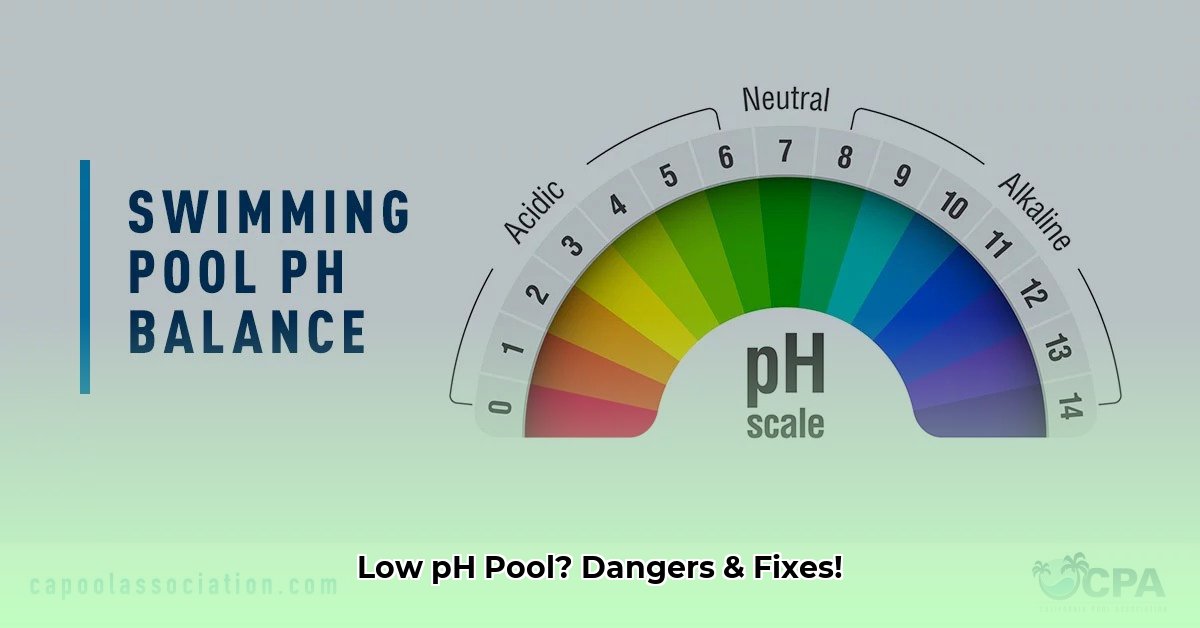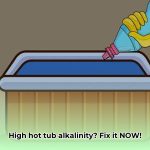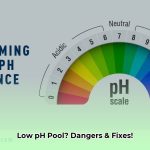Having a pool can be a fantastic way to relax and cool off, but maintaining the right water chemistry can sometimes feel like a science experiment. One common issue pool owners face is low pH. This guide will walk you through everything you need to know about low pH, from identifying the problem to fixing it and preventing it from happening again.
Understanding the Problem: What is Low pH and Why Does it Matter?
Ideal pool water pH sits between 7.2 and 7.6. Anything below 7.2 is considered low, and while a small dip might not seem like a big deal, it can lead to a domino effect of problems. Think of your pool’s chemistry as a carefully balanced ecosystem—if one element is off, it affects everything else.
Low pH means your water is acidic. This acidity can cause several issues:
- Swimmer Discomfort: Think itchy skin, burning eyes, and dry hair. Not exactly the refreshing dip you were hoping for.
- Equipment Damage: Acidic water corrodes metal components like ladders, handrails, and even the internal workings of your pump and filter system. This corrosion can lead to costly repairs and shorten the lifespan of your equipment.
- Ineffective Sanitization: Chlorine, your pool’s main sanitizer, doesn’t work as well in acidic water. This means your pool is more vulnerable to algae and bacteria growth, potentially leading to a cloudy, unsanitary mess.
- Surface Damage: Low pH can etch plaster and concrete surfaces, and even damage vinyl liners, affecting your pool’s appearance and potentially leading to more extensive repairs down the road.
Testing Your Pool’s pH: Know Your Numbers
Before you start adjusting your pool’s chemistry, you need to know exactly what you’re dealing with. Accurate testing is essential. Here’s how:
Using Test Strips: The Quick Checkup
Test strips offer a convenient and quick way to get a general idea of your pH and other water chemistry parameters. Simply dip a strip into the water, compare the colors to the chart on the bottle, and you’ll get a reading. While convenient, test strips aren’t as precise as liquid test kits.
Using a Liquid Test Kit: The Precise Measurement
Liquid test kits provide a more precise reading of your pool’s pH. These kits typically involve adding a few drops of reagent to a water sample and comparing the resulting color to a chart. While a bit more involved than test strips, liquid test kits are worth the extra effort for their accuracy.
Pro Tip: No matter which testing method you choose, always follow the manufacturer’s instructions carefully. Accurate testing is the foundation of proper pool maintenance. Some research suggests that environmental factors can subtly influence test results, so testing at a consistent time and location can improve reliability.
Raising pH: A Step-by-Step Guide
Once you’ve confirmed that your pH is low, it’s time to take action. Raising pH typically involves using soda ash (sodium carbonate). Here’s how to do it safely and effectively:
-
Calculate the Dosage: Don’t just guess! Use a pool calculator (many are available online) or the instructions on your soda ash packaging to determine the precise amount needed based on your pool size and current pH. This precision minimizes the risk of overshooting your target pH.
-
Prepare the Soda Ash: Add the calculated amount of soda ash to a bucket of water. Always add chemicals to water, never water to chemicals, to prevent splashing and potential hazards.
-
Add the Solution Slowly: With your pool pump running, slowly pour the soda ash solution into the deep end of your pool. The running pump will help distribute it evenly.
-
Retest and Repeat: After several hours, retest your pH. If it’s still low, repeat the process, adjusting the dosage as needed. It’s better to make multiple small adjustments than one large one, which can overshoot the mark and cause other imbalances.
Understanding the Causes of Low pH: Prevention is Key
Now that you know how to fix low pH, let’s talk about preventing it in the first place. Several factors can contribute to low pH:
- Rainwater: Rain is naturally slightly acidic and can lower your pool’s pH, especially after heavy downpours. Using a pool cover can help minimize this effect.
- Organic Debris: Decaying leaves, twigs, and other organic matter release acids into the water. Regular skimming and cleaning can help prevent this.
- Chemicals: Some pool chemicals, like certain algaecides, can lower pH. Always use chemicals according to the manufacturer’s instructions.
- High Bather Load: Body oils, sweat, and sunscreen can introduce acids into the water, particularly after heavy pool use. Showering before swimming can help reduce this.
- Low Total Alkalinity: Total alkalinity acts as a buffer, preventing drastic pH swings. If your total alkalinity is low, it’s easier for your pH to drop.
Maintaining Balanced Water Chemistry: The Long-Term Solution
Maintaining a balanced pool requires ongoing effort and vigilance. Here are some key strategies:
- Regular Testing: Test your pH and other water parameters at least twice a week, and more frequently during periods of heavy use or after rain.
- Manage Total Alkalinity: Aim for a total alkalinity level between 80 and 120 ppm. If it’s low, use baking soda (sodium bicarbonate) to raise it.
- Avoid Over-Chlorination: While chlorine is essential, excessive amounts can lower pH. Use a stabilized form of chlorine to minimize this effect.
- Consider a Pool Cover: A cover helps keep out rain and debris, both of which can affect pH.
Troubleshooting: When pH Keeps Dropping
If you’re consistently battling low pH, there may be an underlying issue. Here are some things to consider:
- Low Total Alkalinity: Address low alkalinity first, as it directly impacts pH stability.
- High Cyanuric Acid: High cyanuric acid can interfere with chlorine effectiveness and indirectly affect pH.
- Chemical Feeder Problems: A malfunctioning chemical feeder can disrupt your pool’s chemical balance.
- Excessive Organic Matter: Thoroughly clean your pool to remove any accumulated debris.
If you’ve tried everything and your pH is still dropping, it’s always a good idea to consult with a pool professional. They can help diagnose any underlying problems and recommend appropriate solutions.
Comparing pH Adjustment Chemicals
| Chemical | Purpose |
|---|---|
| Soda Ash | Raises pH |
| Baking Soda | Raises total alkalinity (and slightly raises pH) |
Glossary of Common Terms
- pH: A measure of how acidic or basic a substance is, on a scale of 0 to 14. 7 is neutral, below 7 is acidic, and above 7 is basic (alkaline).
- Total Alkalinity: A measure of the water’s ability to resist changes in pH. It acts like a buffer, preventing drastic fluctuations.
By understanding the causes, consequences, and solutions for low pH, you can take control of your pool’s water chemistry and ensure a clean, comfortable, and safe swimming environment for everyone. Remember, maintaining proper water balance is an ongoing process, but with diligence and the right knowledge, you can keep your pool sparkling and ready for a refreshing dip.
- Memorial Stones for Gardens: A Guide to Creating a Lasting Tribute - April 29, 2025
- Melon Cut Diamonds: A Comprehensive Guide - April 29, 2025
- MarketStreet Lynnfield Stores: A Complete Directory & Shopping Guide - April 29, 2025










